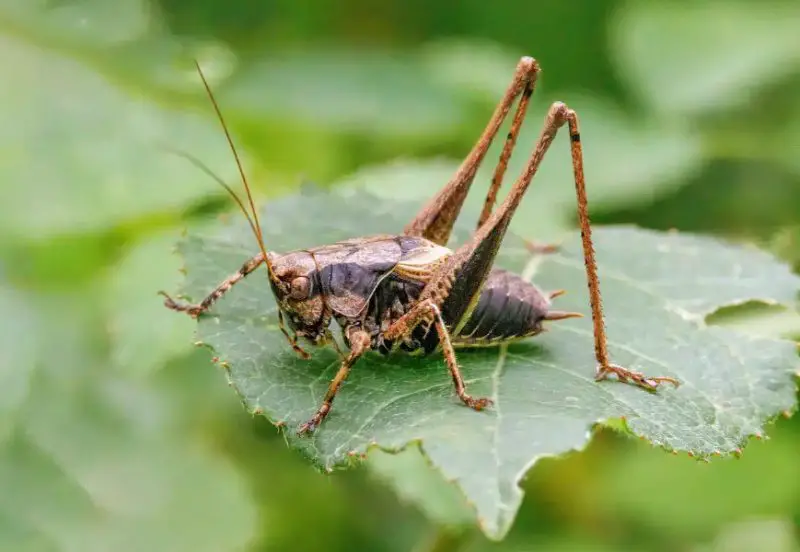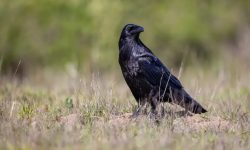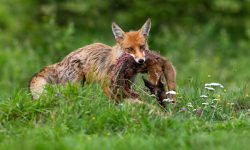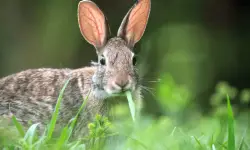Crickets are some of the most recognizable and intriguing insects found across the globe. Known for their nighttime chirping and remarkable jumping ability, these small creatures have adapted to a wide range of environments—from grassy meadows to humid basements. But have you ever wondered: What do crickets eat?
Understanding the diet of crickets is essential not only for nature enthusiasts but also for pet owners, farmers, and ecologists. As omnivorous scavengers, crickets feed on both plant and animal matter, making them important recyclers in their ecosystems. Their diet helps maintain soil health, balance insect populations, and even support larger animals that prey on them.
In this comprehensive guide, we’ll explore 18 foods crickets eat to stay alive and active, breaking down their nutritional needs, feeding behavior, and the difference between wild and captive cricket diets. Whether you’re raising crickets or just curious about their role in nature, this article will give you everything you need to know about their diverse and fascinating menu.
Understanding the Cricket Diet

Crickets are omnivores, meaning they consume both plant-based and animal-based foods. Their diet depends largely on availability and habitat conditions. In the wild, crickets are scavengers—they feed on decaying organic matter, fungi, plants, and even other insects.
Their mouthparts are designed for chewing, which allows them to consume tough plant fibers, seeds, and small insects. This adaptability is why crickets thrive in grasslands, forests, and urban environments alike. In captivity, crickets require a balanced mix of carbohydrates, protein, and moisture to remain healthy and active.
Let’s look at the 18 foods that make up a cricket’s diet and how each contributes to their survival.
18 Foods That Keep Crickets Alive and Active
1. Fresh Leaves
Crickets eat a wide variety of leaves, from grass blades to vegetable foliage. Fresh, tender leaves provide fiber, moisture, and essential nutrients.
In the wild, they graze on whatever vegetation they encounter, while in captivity, leafy greens such as spinach, kale, and lettuce are ideal. Avoid wilted or chemically treated leaves, which can harm them.
2. Fruits
Fruits are a favorite food for crickets, offering natural sugars and hydration. They love slices of apples, oranges, bananas, and berries.
The moisture in fruits keeps them hydrated, while the carbohydrates give them energy for constant movement and chirping. Just remember to remove uneaten fruit after a day to prevent mold growth in enclosures.
3. Vegetables
Vegetables like carrots, squash, potatoes, and cucumbers are excellent sources of vitamins and water. Crickets chew through soft vegetable matter easily, gaining both energy and hydration.
Carrots are especially popular—they’re nutrient-rich and long-lasting, making them perfect for feeding both wild and pet crickets.
4. Grains
Grains are one of the main carbohydrate sources in a cricket’s diet. In the wild, they feed on fallen seeds and cereal crops. In captivity, crushed oats, wheat bran, and cornmeal work perfectly.
These grains help maintain high energy levels, supporting their rapid movements and continuous activity.
5. Seeds
Seeds provide fats, proteins, and essential minerals that crickets need for growth. Wild crickets forage for seeds in grasslands, fields, and gardens.
Sunflower seeds, chia seeds, or even crushed birdseed blends can be offered to pet crickets for balanced nutrition.
6. Decaying Plant Matter
As natural recyclers, crickets often feed on decomposing plant material. Dead leaves, rotting wood, and decaying stems are rich in organic nutrients.
This not only sustains the crickets but also contributes to the breakdown of organic waste, enriching soil health in their ecosystems.
7. Fungi and Mold
Crickets consume fungi, mold, and lichens when other food sources are scarce. These offer protein, minerals, and moisture, especially in damp environments.
In forests or basements, fungi serve as a backup food supply during dry seasons or periods of low vegetation growth.
8. Insects and Larvae
Crickets are opportunistic and sometimes eat smaller insects or larvae. They may consume aphids, ants, or even other crickets if food is limited.
This carnivorous behavior provides a concentrated source of protein. In captivity, offering small dried insects or mealworms mimics their natural protein intake.
9. Dead Insects
Scavenging dead insects is common among wild crickets. They feed on carcasses left by predators, recycling essential nutrients back into the ecosystem.
This opportunistic feeding habit helps maintain ecological balance while ensuring crickets get enough protein and fat.
10. Flowers and Petals
Crickets often eat flower petals, pollen, and nectar when available. These soft plant materials are full of sugars and vitamins.
In gardens, you may notice them nibbling on marigolds, dandelions, or clover blossoms. For captive crickets, edible flowers like hibiscus and nasturtiums are safe options.
11. Roots and Tubers
Crickets sometimes dig into soil to nibble on roots and underground plant parts. These offer carbohydrates and moisture, especially during dry spells.
Wild crickets often consume small root systems of grasses and weeds, helping aerate soil and improve nutrient cycling.
12. Algae
In humid or wet environments, crickets feed on algae found on rocks, soil, or decaying logs. Algae contain trace minerals and amino acids beneficial for insect health.
Though not a primary food source, algae add diversity to their diet and can help sustain them during periods of scarcity.
13. Bread Crumbs and Grains (Human Foods)
In urban areas, crickets often scavenge bread crumbs, rice, and leftover grains. These mimic their natural preference for starches and carbohydrates.
In captivity, crushed whole-grain bread or unsweetened cereal can serve as occasional treats. Avoid processed foods high in sugar or salt.
14. Cat or Dog Food (Protein Source)
Crickets kept as feeder insects or pets can benefit from high-protein supplements like crushed dry cat or dog food. These foods contain the essential amino acids crickets need to grow and reproduce.
However, moderation is key—too much protein can shorten their lifespan. Offer small portions once or twice a week.
15. Grass and Weeds
Grass and weeds are essential for wild crickets, providing consistent food and shelter. They chew on tender grass blades and small weeds throughout spring and summer.
These plants contain chlorophyll, vitamins, and fiber that aid digestion and metabolism.
16. Vegetable Peels and Scraps
Crickets are great at recycling kitchen waste. Vegetable peels—like cucumber skins, carrot tops, and lettuce stems—are safe and nutritious.
This sustainable feeding method is perfect for captive crickets, reducing waste while providing variety in their diet.
17. Paper and Cardboard (Occasionally)
When food is scarce, crickets have been known to nibble on paper, cardboard, or other fibrous materials. These contain cellulose, which they can digest in small amounts.
While this behavior is more about survival than preference, it shows how resourceful crickets can be in adapting to their environment.
18. Other Crickets (Cannibalism in Captivity)
When overcrowded or underfed, crickets may turn to cannibalism. They eat weaker or injured individuals to survive.
This occurs primarily in confined spaces where resources are limited. Providing adequate food and space prevents this behavior in captive environments.
How Crickets Find and Eat Food
Crickets rely on smell, taste, and touch to locate food. Their antennae are equipped with sensory receptors that detect chemical cues in the air and on surfaces.
They’re nocturnal feeders, coming out at night to avoid predators. In the wild, crickets forage on the ground, consuming fallen organic matter, insects, and seeds. In captivity, they eat from shallow dishes or directly off the substrate.
Crickets chew their food with mandibles and break it into small pieces before swallowing. Moist foods help them stay hydrated, while dry foods contribute to their energy reserves.
Nutritional Requirements of Crickets
To stay alive and active, crickets need a balanced diet with the following nutrients:
- Protein: Builds muscles, supports reproduction, and maintains body function.
- Carbohydrates: Provide energy for constant movement and chirping.
- Fats: Help store energy and protect internal organs.
- Fiber: Aids digestion and gut health.
- Vitamins & Minerals: Strengthen the exoskeleton and immune system.
- Water: Vital for hydration and temperature regulation.
In captivity, moisture-rich foods like fruits and vegetables often replace the need for a separate water source.
Seasonal Diet Changes
Crickets adapt their diet depending on the season:
- Spring: Fresh shoots, grass, and insects are abundant. They feed heavily to regain strength after winter.
- Summer: Fruits, seeds, and small insects dominate their meals, providing energy for breeding and activity.
- Autumn: Crickets consume carbohydrate-rich foods like grains and decaying plants to prepare for cold weather.
- Winter: In cold regions, crickets either die off or seek shelter, eating whatever remains—dead insects, dry grass, or stored grains.
Crickets in the Food Chain
Crickets play an essential ecological role as both consumers and prey. By eating decaying material, they help decompose organic matter and recycle nutrients into the soil. In turn, they serve as food for birds, reptiles, amphibians, and small mammals.
Their diet supports the entire food web, making them one of nature’s most efficient recyclers and vital links in maintaining ecosystem balance.
Feeding Crickets in Captivity
If you’re raising crickets for pets or as feeders, here are tips for keeping them healthy:
- Provide variety: Mix grains, fruits, and greens for balanced nutrition.
- Add moisture: Offer fresh vegetables or water gels to prevent dehydration.
- Avoid mold: Remove uneaten food daily.
- Use gut loading: Feed crickets nutrient-rich foods 24 hours before they’re fed to reptiles or amphibians, improving the nutrition passed on.
- Keep temperatures stable: Crickets thrive in warm environments between 80–90°F (26–32°C).
These steps ensure your crickets remain active, healthy, and long-lived.
Interesting Facts About Crickets and Their Diet
- Crickets are omnivorous scavengers, eating nearly anything organic.
- Their diet directly affects their chirping rate—nutrient-rich foods keep them more vocal and energetic.
- Crickets can survive for up to two weeks without food but only a few days without water.
- They use their mandibles to chew tough materials like plant stems and grains.
- In some cultures, crickets are farmed for human consumption, valued for their protein-rich, sustainable nutrition.
FAQs About Cricket Diets
What do crickets eat the most?
Crickets primarily eat plants, fruits, grains, and small insects depending on availability.
Do crickets eat meat?
Yes, occasionally. They eat dead insects or smaller crickets for protein when food is scarce.
What should I feed pet crickets?
A mix of vegetables, grains, and fruits like carrots, oats, and apples keeps them healthy.
Can crickets eat bread?
Yes, but only small amounts. Use whole-grain bread, not sugary or salted varieties.
Do crickets drink water?
They get most of their moisture from fruits and vegetables, but you can offer water gels to prevent drowning.
Why do crickets eat each other?
Overcrowding, hunger, and stress can lead to cannibalism in confined environments.
Conclusion
Crickets may be small, but their diet is surprisingly diverse and vital to their survival. These omnivorous insects consume everything from fresh leaves and fruits to insects and fungi, adapting effortlessly to their surroundings. Their feeding habits not only sustain their species but also benefit the ecosystems they inhabit.
By recycling organic material and serving as prey for countless animals, crickets hold a crucial role in the natural world. Understanding what crickets eat reveals how even the tiniest creatures contribute to maintaining life’s balance.
So the next time you hear a cricket’s chirp echoing through the night, remember—it’s not just a song of summer. It’s the voice of a well-fed survivor, thriving on nature’s endless buffet.






